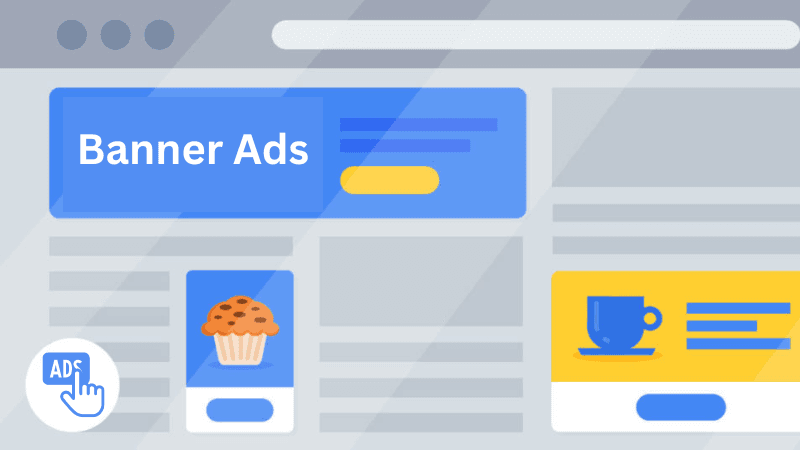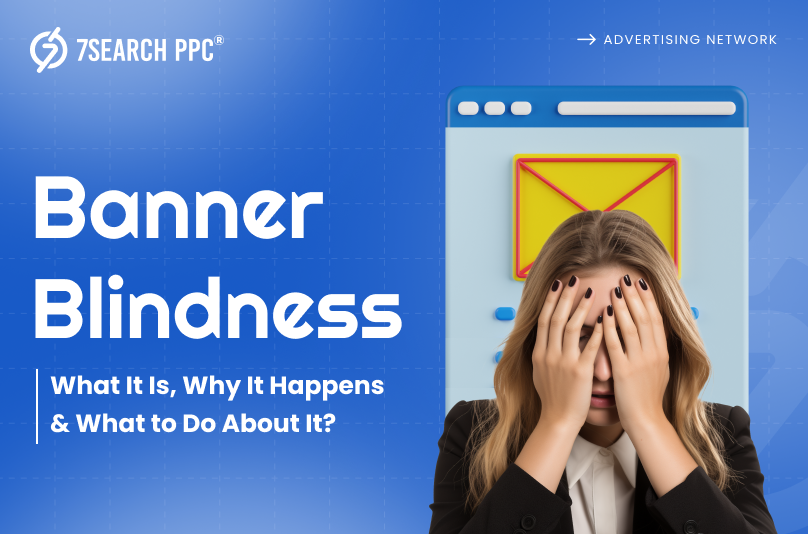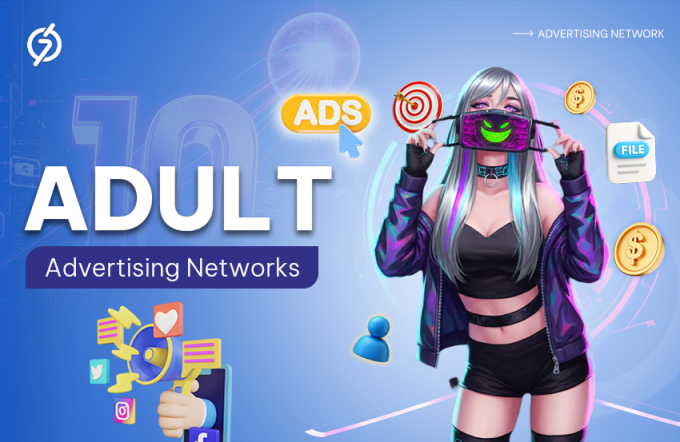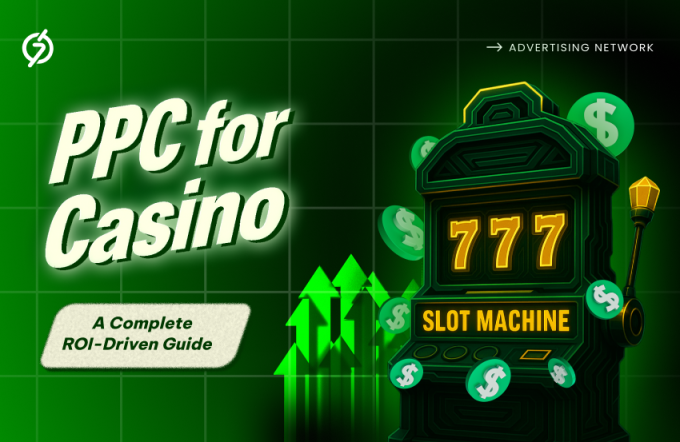The whole world is facing banner blindness, but relax. It’s not a disease like COVID-19; in fact, it’s not any kind of disease. It’s only blindness that happens to viewers when they see an online ad called “banner.” Can you tell how many banner ads you watched and paid attention to in a month? Ok, not a month, but in a week. One or two or max to max three, right? But do you know that advertisers pay for every banner we encounter?
The reality is that thousands of banners are roaming around the people on various digital platforms, but only a few get proper attention. As a marketer, this is a serious issue because it means your message might get lost in the crowd and reduce the effectiveness of your digital advertising efforts.
Let’s better understand this issue together and consider ways to win customers’ trust by engaging them with banner ads instead of blinding them. Keep reading this blog to discover proven strategies for overcoming banner blindness and maximizing your ad campaign’s success.
Banner Blindness: The Invisible Threat
Why is this a threat? A study by Infolinks found that 86% of consumers suffer from banner blindness. This blindness happens when people ignore or overlook banner ads on websites, even if they see them. It happens because users have become so used to seeing ads that they automatically avoid looking at them, either consciously or subconsciously.
This behavior often occurs because people are focused on finding specific information, and banners are seen as distractions. As a result, even well-designed banner ads might not get noticed, reducing their effectiveness in grabbing attention or driving clicks.
According to the Next&Co Digital Media Wastage Report, digital ad spend waste hit an all-time high of $123 million, making it one of the largest amounts ever recorded. While we are not attributing this entire amount to banner blindness, it certainly played a role.
Is Your Banner Ad Invisible? 5 Questions to Ask Yourself
Banner advertisements, once a staple of online advertising, can be effective when done right. But if your banner ad is not getting notices or driving conversions, it’s time to take a closer look. Ask yourself these five questions to determine if your audience is also experiencing banner blindness:

Is Your Banner Ad Placed in the Wrong Spot?
If your banner ad is placed in a location that users have learned to ignore, it may become invisible. People are used to certain webpage layouts and know where ads typically appear, leading to “banner blindness.” This happens because users have browsed many websites with similar ad placements and have unconsciously learned to skip over those areas. To avoid this, try experimenting with different placements on your site where users don’t expect ads, which makes your banner more noticeable.
Is Your Page Too Cluttered with Ads?
A web page filled with too many ads, including text ads, banner ads, native ads, and links, can overwhelm users. This ad clutter leads to sensory overload, causing visitors to ignore the ads entirely and focus only on the content they came for. When there are too many distractions, the effectiveness of each ad diminishes. To solve this, reduce the number of ads on a single page and focus on a clean layout that allows your banner ad to stand out without competing for attention.
Does Your Ad Look Too Different from the Content?
Banner ads that look too different from the surrounding content are easily ignored. Users have developed the habit of skipping anything that looks like an ad. For instance, if your banner uses stylish fonts, bright colors, or a background that contrasts with the rest of the page, visitors may recognize it as an ad and avoid it. To overcome this, design your banner ad to blend more seamlessly with the content, making it look like a natural part of the webpage rather than something that stands out as a typical ad.
Is Your Ad Relevant to the Audience?
If your banner ad isn’t relevant to the people who are seeing it, they’ll likely ignore it. Users are mostly connected with banner ads that speak to their interests or needs. When an ad feels irrelevant, viewers see it as annoying and skip over it. To ensure your ad is seen, focus on targeting the right audience by personalizing the ad content to match their preferences and browsing behavior. This increases the chance of catching their attention.
Is Your Ad Affecting Other Content on the Page?
Sometimes, a banner ad can make nearby content invisible as well. When ads are placed too close to important content, users may mistakenly assume the entire area is just an ad and skip over it. This reduces not only the visibility of the ad but also the surrounding content. To prevent this, create a clear distinction between your ad and key content, ensuring that both are easily noticeable without blending into one another.
The Negative Consequences of Banner Blindness in Digital Advertising
It occurs when users ignore online banner ads, often due to their repetitive nature and placement. This phenomenon can have several negative consequences for advertisers. Some of them are given below:
Low Click-through Rates (CTRs)
When users consistently ignore banner ads, the percentage of people who actually click on them drops. This is called a low click-through rate. It means that fewer people are taking action on your ad, which can create your ad campaigns less effective and more expensive, as you are paying for ads that are not generating much interest or engagement.
Decreased Brand Awareness
If users start ignoring your banner ads, they might not even remember seeing them. This lack of visibility means your brand isn’t getting the attention it needs. Over time, this can lead to decreased brand awareness, making it harder for potential customers to recognize or recall your brand when they are making purchasing decisions.
Reduced Conversion Rates
Ignored ads mean fewer clicks and interactions, which leads to fewer people completing the desired actions, such as making a purchase or signing up for a service. This results in reduced conversion rates. Lower conversions can hurt your sales graph and also decline your ROI.
Ad Engagement Goes Downwards
When users see the same ads over and over and start to ignore them, their overall engagement with your banner ads decreases. This means fewer people interact with your ads, such as clicking, liking, or sharing them. Reduced engagement can make your ad campaigns less effective and make it more difficult to connect with your target audience.
Effective Ways to Combat Banner Blindness
Getting fed up with these types of obstacles only makes you sad; it’s time to rethink it and find solutions. The only way you jump through it is by combatting banner blindness. Here are some effective ways:
Test Different Ad Positions and Sizes
Banner blindness often occurs when ads are placed in predictable locations like the top of the page or the sidebar. To counteract this, experiment with placing ads in unconventional spots and using various sizes. For example, try placing ads within the content or using larger formats. You can not predict which banner ad format will change the game and which one will blind your audience. By testing different combinations, you can find what catches your visitor’s attention and improves click-through rates. Here are some banner sizes that you can test:
- Leaderboard (728×90)
- Medium Rectangle (300×250)
- Large Rectangle (336×280)
- Skyscraper (120×600)
Create Visually Appealing Designs
Poorly designed online ads with clashing colors, unreadable fonts, or a cluttered appearance can reduce credibility and fail to engage users. You must keep your ad design attractive and well-organized. You can use a clear hierarchy by placing the most important elements prominently. For instance, if you want to highlight a product, make it larger to attract attention. This approach helps in making the ad more engaging and less likely to be ignored.
Choose a Call to Action Wisely
A clear and persuasive call to action (CTA) is crucial for breaking through banner blindness. Your CTA should communicate the ad’s purpose and guide the user toward the desired action. For example, if you want users to sign up for a newsletter, you can use a CTA like “Join Now” or “Subscribe Today” to make the action clear and enticing. However, choosing the CTA depends on what you want your audience to do, whether it’s making a purchase, signing up, or downloading the content. Different CTAs are designed for different actions you want to achieve.
Look Towards Native Advertising
Native ads fit in smoothly with the surrounding content. This nature makes native advertising special, which helps advertisers deliver a less intrusive and more engaging message. These ads can appear as text within social feeds or in between the content of a blog. Native ads often have higher visibility and engagement because they match the format and style of the surrounding content.
Think Differently and Give 3D Experience to Your Audience
3D photos in banner ads allow users to interact with an animated 3D object or product within the ad. This interactive experience can make your ads stand out more than traditional flat banners.
By giving features to the audience to move or customize the product image, 3D ads can capture attention and offer higher engagement and conversion rates to advertisers. This strategy can help you present your brand uniquely and capture the attention of your audience whenever they interact with your ad, whether it’s within the content or through other places.
Conclusion
Banner advertising is more challenging than it seems. Although advertisers mostly utilize it, one thing they mostly worry about is banner blindness. It breaks their overall digital advertising efforts and poses a significant threat to them. To overcome this challenge, it’s essential to create visually appealing ads, choose the right call to action, and experiment with different ad sizes and placements. Additionally, using native advertising and incorporating interactive elements like 3D can help your ads stand out from the crowd. Now, we think that you can successfully tackle banner blindness after reading this blog.
Frequently Asked Questions (FAQs)
What is banner blindness?
Ans. Banner blindness is the tendency of people to ignore or overlook banner ads on websites. It happens because users have become so used to seeing ads that they automatically avoid looking at them.
How does banner blindness affect advertisers?
Ans. Banner blindness can lead to fewer click-through rates, decreased brand awareness, reduced conversion rates, and decreased ad engagement.
What are the main causes of banner blindness?
Ans. Some of the main causes of banner blindness include repetitive ad placements, poor ad design, lack of relevance, and ad clutter.
Is banner blindness a new phenomenon?
Ans. No, this has been an issue for many years. However, it has become more prevalent as the number of online ads has increased.
Is there a best time of day to display banner ads?
Ans. Studies have shown that banner ads may be more effective when displayed during peak traffic times, such as in the morning or evening.


















